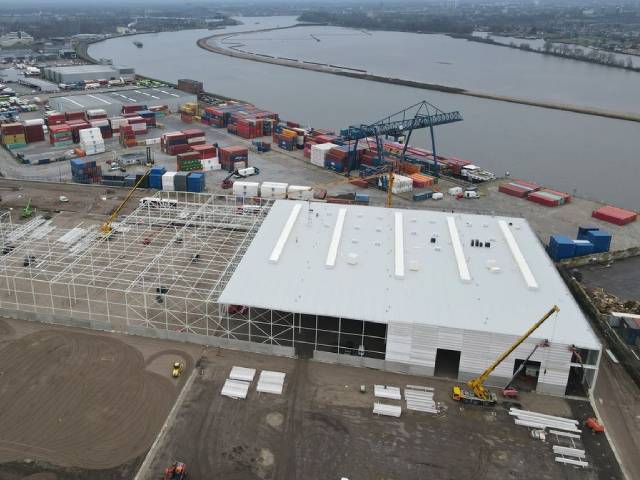
Over the past six years, throughput at BCTN’s inland container terminal in Alblasserdam rose to 100,000 containers per year. As such, the terminal contributes to the port of Rotterdam’s on-going effort to improve accessibility – as well as attracting new economic activity to the region.
The ‘Container Transferium’ in Alblasserdam was launched in 2015, with the specific purpose of relieving pressure on Rotterdam’s regional road network, which includes the busy A15 connection with Maasvlakte. Inland shipping plays a key role in this context. Alblasserdam’s inland terminal is linked by inland shipping shuttles to the deep sea terminals in the port of Rotterdam. BCTN has agreed fixed windows with each of Maasvlakte’s terminals, based on a minimum call size of 150 to 200 containers per inland vessel. BCTN’s Managing Director Joop Mijland: “In the launch phase, our inland shipping connection with the port of Rotterdam was still organised on an incidental basis. Nowadays, we offer daily inland services from and to every deep sea terminal in Rotterdam, to which end we work together with a variety of partners.”
Bundling containers
BCTN operates eight inland terminals in the Netherlands and Belgium. The terminal at Alblasserdam is situated in the heart of this network and is mainly used for transhipment. Inland vessels visit the terminal to bundle different container shipments, exchange cargo in between departures and link to BCTN’s inland shipping network. Over the course of six years, the volume of inland containers handled in Alblasserdam has risen to around 100,000 units per year. This has significantly cut back the number of trucks on the region’s roads. BCTN will be taking a second container crane into use in 2021 that will reduce container handling times at the terminal even further. “It’s good to see how the decision to bundle containers at BCTN Alblasserdam, combined with agreements with the terminals at Maasvlakte, is bearing fruit,” says Emile Hoogsteden, Vice President Commercial at the Port of Rotterdam Authority. “This is a major achievement on BCTN’s part – one that helps to improve the accessibility of the region and of the port of Rotterdam.”
Regional activity
Many of the companies based at the Nieuwland Parc industrial estate in Alblasserdam take advantage of BCTN’s inland shipping and terminal services, which also serve as a magnet for new economic activity in the region. Working together with the private sector and local and regional authorities, the Port of Rotterdam Authority continues to invest in attracting new business to Nieuwland Parc. These companies benefit from a direct connection with the container terminal, along which containers can be transported straight to the terminal warehouse via an internal route. In the third quarter of 2021, the Australian logistics real estate investor Goodman will be taking the first part of a new distribution centre at Nieuwland Parc into operation. Hoogsteden: “This shows that BCTN Alblasserdam’s transferium and distribution functions can be developed further on behalf of businesses in the region, and that we can move even more containers by water rather than overland.”
Sustainable fleet
BCTN has been firmly committed to sustainability at its Alblasserdam location from the outset. Among other things, the company has invested in electric cranes, shore-based power for inland vessels, LED lighting and measures to counter noise and light pollution. Last year, BCTN co-invested in the ‘Nijmegen MAX’ container vessel and two ‘Den Bosch MAX’ ships. These vessels are powered by a hybrid-electric propulsion system rather than a conventional diesel engine. They sail along the corridors that BCTN maintains with the hinterland, passing the Alblasserdam terminal on both their outward and return voyages. Together with the Municipality of Alblasserdam, the Port of Rotterdam Authority, Zero Emission Services (ZES) and various partners, BCTN is working to realise a new charging infrastructure for battery containers. In due course, the infrastructure will allow BCTN’s fleet, which currently still relies on a hybrid propulsion system, to go full electric. In addition, BCTN is involved in the development of a hydrogen-powered vessel: MSC Maas. This ship will also be put into service on the company’s Rotterdam route in late 2021.








































